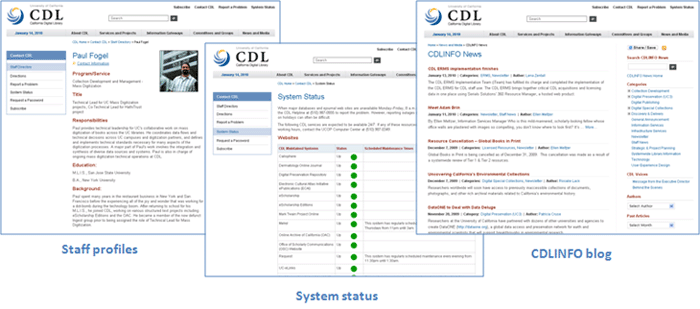CDL Website Redesign

Why did we change?
CDL’s former web presence, consisting of two different areas (CDL Brochure site and Inside CDL site), was launched in September 2003. Many things have happened since then: a major reorganization, a new Executive Director, and the launch of many new and newly redesigned services. We wanted to reflect the new ways in which we achieve the mission that we’ve had all along to build technology and tools that help advance the research lifecycle for users in the UC community and beyond.
How did we do it?
Before we started designing, we listened intensively to our website users through surveys and interviews. We analyzed how they used our site in observational interviews and fixed the major stumbling blocks that they were encountering locating pieces of information on our site. We also looked at the new audience segments that we wanted to engage and thought about content features and landing areas that would help draw them into our site.
What did we change?

New look and feel
Since the last redesign in 2003, the visual design of websites has modernized and accelerated in leaps and bounds. This acceleration in graphic design also mirrored the leaps and bounds we’ve taken with our organization and the services that we produce. We wanted to convey this visceral energy with a more modern and streamlined look and feel that will engage our audience and invites them into our website.
New search functionality
We’ve completely revamped our search. We are now using the eXtensible Text Framework (XTF) (https://www.cdlib.org/services/publishing/tools/xtf/) query tool to power our new search engine. XTF is a platform created and maintained by our very own Publishing Program.
The new search includes an auto-complete function and a spell check that helps users with their search queries. Also, there are newly enhanced ways for users to filter their search results by category facets.
New features
- System status page for CDL maintained services
- Staff profiles
- Information gateways for particular audience segments
- New communication channels (expanded CDLINFO blog capability, Twitter)
